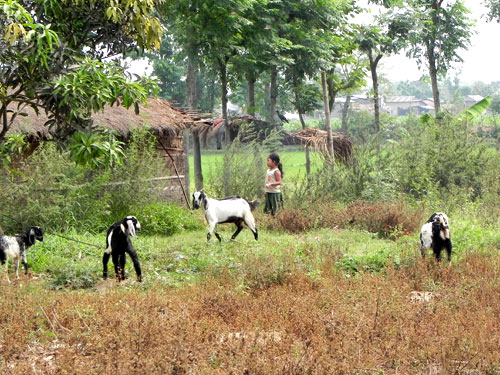April 20
Activity begins early in Sauraha, not surprising since as the day unfolds the temperature rises to a sweltering level. At sunrise the air has a refreshing coolness about it. The community comes to life as goats and water buffalo are taken from their night quarters to grazing areas. Upside down handmade woven baskets are righted, allowing the contents — live chickens — free access to hunt and peck at their leisure.
The NTNC elephants silently head out of their personal stables, mahout on board, to collect the following day’s supply of fresh-cut elephant grass. The privately owned elephants adhere to a different routine and a different diet. Not permitted inside the national park, the privately owned elephants eat grass that is cut seasonally in bulk and stacked, forming a hut-type structure next to their mahout’s house. This grass is stored for months at a time, much like the baled hay fed to elephants in zoos and circuses worldwide.
By contrast, elephants owned by the government and NTNC, a NGO (nongovernmental organization) have access to the forest areas, where grass is plentiful. They collect their own fresh-cut grass daily. This activity has many benefits, including that the elephants eat high-quality good-tasting fodder and spend hours engaging with their natural habitat.
Life in captivity is restrictive but access to home range forests brings these elephants closer to their roots and provides them with an opportunity to walk, forage and bathe in the environment they are adapted to. If elephants are to be maintained in captivity, keeping them in range countries definitely has benefits.

